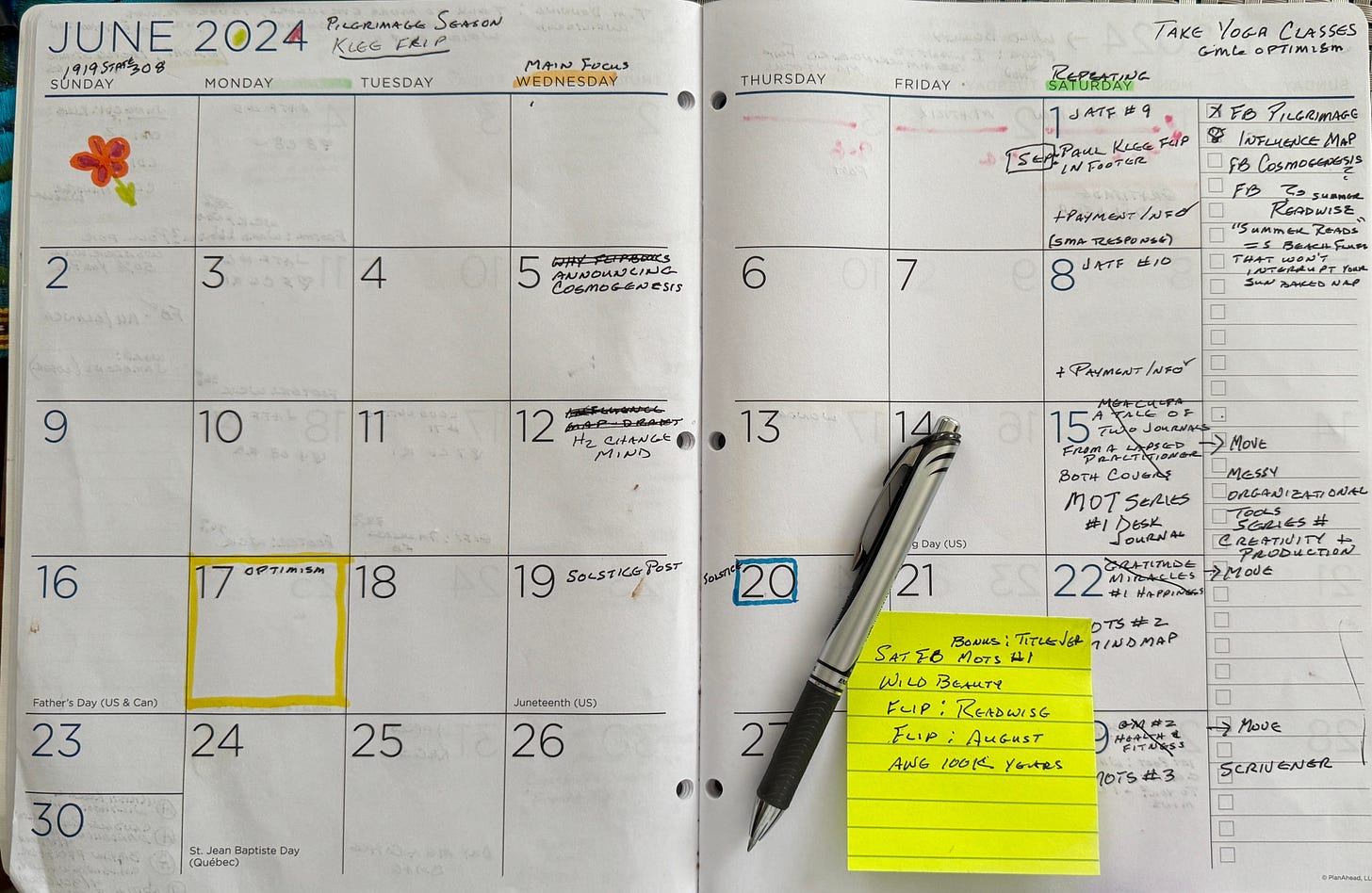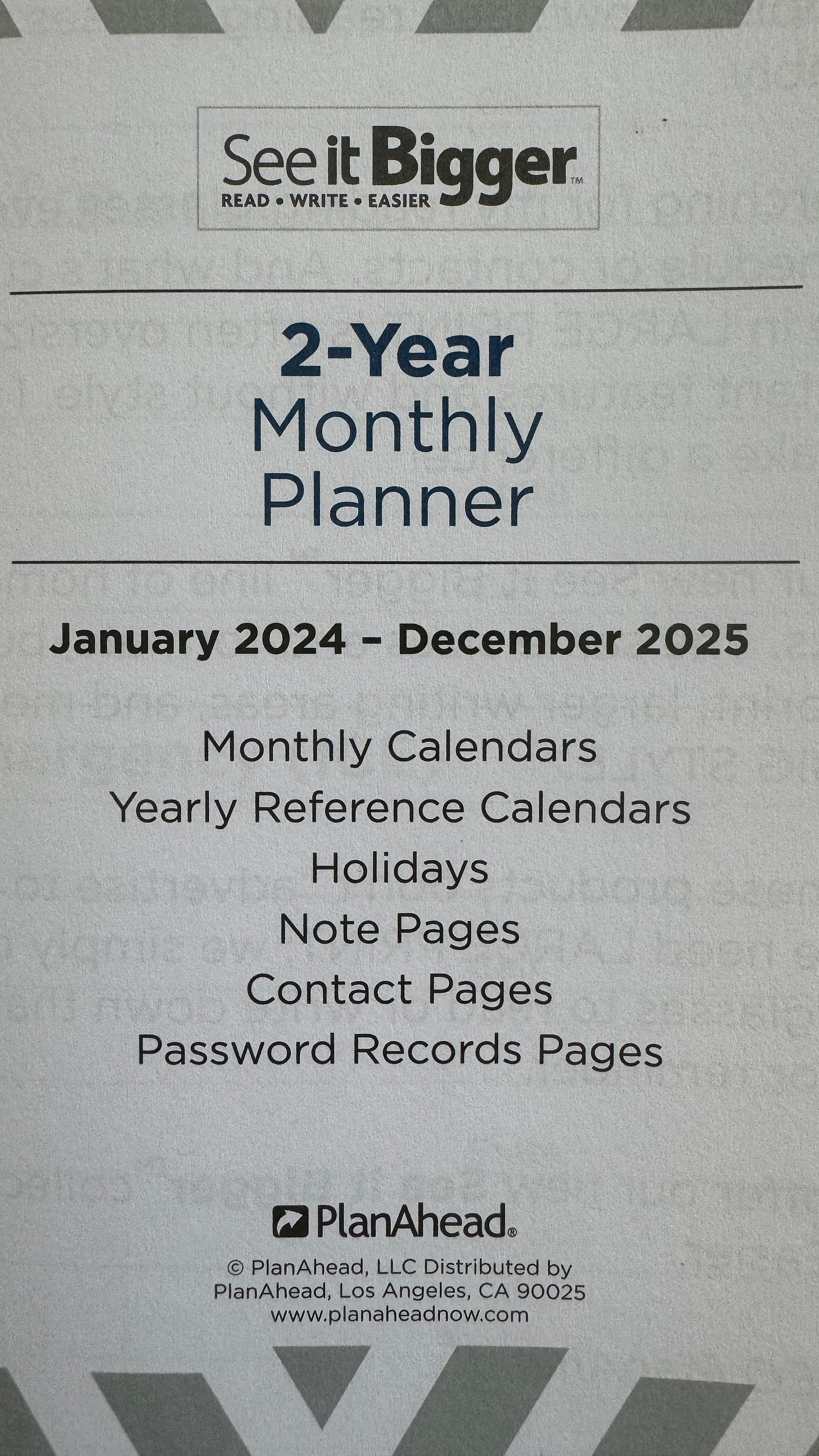Messy, organizational tools, 1 of 6
FYI … this has ZERO to do with marketing, and FYI #2 … this has ZERO + zero to do with how to write. And, don't miss the bonus tool.
After almost two years here, I’m *almost* getting the hang of doing this Substack thing … well, at least the writing and organization of it … that marketing part has yet to be cracked … if that’s what you’re looking for, it’s not here.
So, for the next few weeks, the Saturday posts are going to focus on tools that make my life as a Substack writer easier and give me more time to focus on actual writing what I want to write. I hope some of these tools help you, and long the way, I’d love it if you shared your best tools and practices.
Why “messy?” you might ask.
The front end of any project is messy. Thinking is messy with starts and stops, this and thats, rabbit holes and false starts. We need the freedom to be messy as we begin, to mess around with possibilities before we settle into the bee line. I tried to use Scrivener for this front-end messing around; however, it wasn’t visual-enough. I couldn’t “see” enough and needed to be able to scratch through and replace ideas.
Tool #1: Monthly/Yearly desk calendar/journal (and don’t forget the bonus tool at the end)
This first tool has transformed my writing life. I am absolutely in love with my desk calendar, particularly the version I happened onto at the campus bookstore where all the calendars I thought I wanted were gone and this lonely orphan was sitting there waiting for me.
My Substack desk calendar is a blend of mess and structure … or maybe I should say mess within a structure. It’s where mess turns into order over time … not only marking the days for posting, but even more important for me, the rhythm and rhyme of the posts. For most of my time here on Substack, I’ve been doing “whim posting;” writing whatever happened to come to my attention at the time, which led to a lot of reworking old themes. Those whims haven’t disappeared but I now have a place to put them and acknowledge them as possibilities without having to jump into writing. That time and space seems to lead to newer thoughts and deeper digging.
One of the things I’ve discovered about myself over the years is that it takes a lot of visual prompts to keep me organized. I have a cork board wall that I mine for inspiration and use to map out thoughts. I use a weekly whiteboard for appointments and focus reminders (my electronic calendars were never visual enough). And now, my Substack desk calendar is always open on my desk, ready to catch whatever idea floats by at the moment. Here are some of the specifics of how I use it:
Finding the right calendar to fit you and your workflow may take awhile. Here’s the one I didn’t know I wanted, but now don’t know what I would do without.
Bonus Tool … title analyzer … UPDATE
posted about a title analyzer at almost the same time as this post was released recommending a different analyzer. I’ve tried both now and hers is better …Try this one: MonsterInsights
It helps you think through your word usage much better than the one below … plus it gives you a running list of your tries so you can always go back to a previous attempt. On my last post, I started with a title that rated 45 and wound up with one that rated 93. All that gets you, of course, is a better shot of having your post opened … but that’s a lot.
Original recommendation which is also worth trying to see which one works for you.
We all know titles are critical … Click here to check yours.
My first version earned a 75%. After six more tries, it went up to 92% (went as low as 42%). Here’s the underlying formula:
6 words
40 characters max
Helpful words: see list
No negative words
Numbers help
Sentence case … Only first word capitalized
That’s it for this week.
Would love to hear how you keep your Substack writing organized. And, if you find this series helpful, you can always …









Joyce, you mention a list of helpful words, "see list". How do I access that list?
I have several calendars/planners and they're all pen-and-paper ones because the digital ones have never worked for me at all. My favorite insight into how you use yours: "Flip back and forth from where I've been to where I'm trying to go." Love that.